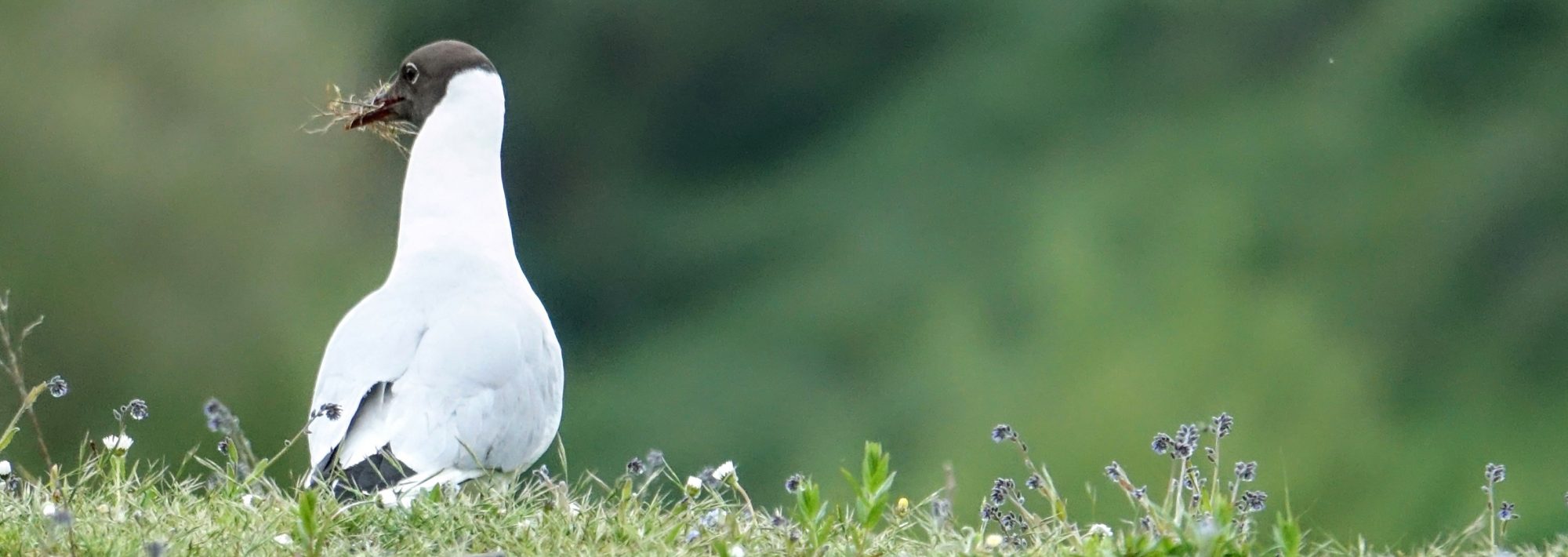The best maps to use to locate your bird observations are the Ordnance Survey 1:50,000 Landranger series or, for more accuracy, the 1:25,000 Pathfinder series. The latter maps are the best for finding your way around on foot, as footpaths, hedgerows and other features are clearly shown.
- Hold the map the right way up so that you can read the print. North with be at the top of the map.
- Now locate the position you wish to identify on the map. Look for hedgerows, power lines and buildings which will help you fix your position. In more remote areas you may need to look at the contour lines to identify features like valleys with streams, rocky outcrops and the peaks of hills.
- Having identified your position on the map, look for the blue vertical lines running from top to bottom on the map. You will note that they are numbered consecutively across the top and bottom of the map from left (west) to right (east). Your position will usually be between two of these lines. Divide the space between the lines into 10 and judge how far along the your position is from the left hand line. For example, if the left line is numbered 41 and your position is 5/10ths of the way across, then the first three numbers of the reference will be 415.
- Now look at the lines that run horizontally across the map from left to right, these are numbered from the bottom (south) to the top (north) on both right- and left-hand sides of the map. As before, your position will normally be between two lines, so divide the space into 10 and judge how far your position is from the lower line. For example if the lower line is numbered 94 and your position is 4/10ths of the way up from the line, then the second three numbers of the reference will be 944.
- Combine these two numbers as follows: 415944.
- To make your reference unique, all you need to do now is add the reference letters appropriate for your map. In Shropshire they will be either SJ or SO. If you look on the right hand side of the map where the key to symbols is displayed it will tell you which letters to use.
- If you are in the SO square, the final unique grid reference will therefore be SO415944.
- If you have the OS 1:50,000 map for Ludlow and Wenlock Edge (Landranger 137) and look up this reference you will find that you are on the top of the Long Mynd at the trig point at Pole Bank.
- The process is easy when you have had a bit of practice. Although we prefer that records contain a grid reference, do not worry if you cannot work it out but please try to describe where you are as accurately as possible – you may just have seen a rare bird and you may need someone to confirm your sighting.
A useful website that will assist you to find a grid reference is “Grab a Grid Reference” at the Bedfordshire Natural History Society. This site shows an aerial image on the left and the corresponding Ordnance Survey map on the right. To find a grid reference, follow these steps.
- Use one of the boxes in the pale blue panel in the right-hand menu to get close to where you need the grid reference by entering a place name, an approximate grid reference or even a postcode.
- The cursor on the aerial image will be shown as a hand. Find the exact location by left-clicking on the aerial image and dragging the map until the location of interest falls within the frame. You can also use the “+” and “-” icons in the bottom right of the aerial image to zoom in or out from the map. As you drag or zoom, the map to the right view will change correspondingly.
- Once you can see the point of interest clearly, left click on the red pointer on the aerial image and drag it so that the bottom point with the black “X” lies on the point for which you need the grid reference. (This will NOT work with the blue pointer on the map.)
- The six-figure map reference can then be read from the grey panel in the right-hand menu headed “GB OS Grid References…”. It is the second one down in green lettering, below the words “100m square (Green):”
- This grid reference can then be transcribed or, to minimise errors, can be cut and pasted into your bird report other document.
- This method can be very accurate and you may see the actual tree your bird is sitting in!
- However, bear in mind that the photographs may be some years old and what you see on the ground may differ if there has been development or cultivation e.g.a stubble field on the map may now contain another crop or a wood may have been felled, or planted!
Return to Geographical Resources
Return to Reporting your Records Using a Spreadsheet
